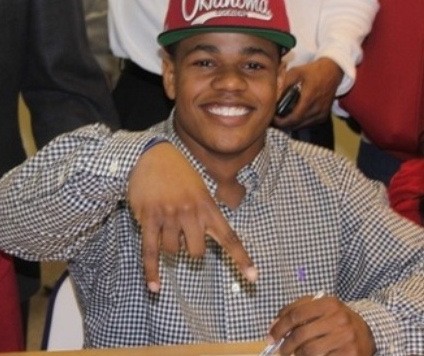As Dennis Dodd of CBSSports.com reported Monday, it would appear that college football is finally going to implement an early signing period for high school recruits.
Momentum for the change has been building for years as competition for prospects has ramped up with the evolution of technology. Even after recruits have made verbal commitments to schools in advance of national signing day in February, coaches still have to deal with potential poachers trying to “flip” players to competing programs later in the recruiting cycle.
Additionally, the growth of media coverage has turned recruiting from a niche for creepers into a sport unto itself for even moderately dedicated fans. The public’s up-to-the-minute knowledge of developments in the recruiting process puts even more pressure on coaches to not only secure talented players, but to stay after them when they commit elsewhere. Taking no for an answer when a prospect pledges his allegiance to another school doesn’t cut it.
So it’s easy to see how moving up signing day would benefit coaches. The sooner a kid can sign his letter of intent, the less time his recruiters have to dedicate to pursuing or babysitting him, the less work coaches have to do.
But what do the players stand to gain? The best answer–in fact, the only one–is that it would relieve some of the pressure and harassment that invariably comes with the recruiting process: constant text messages from coaches, questions from fans hounding you about where you’re going to school, reporters asking for updates on the status of your recruitment, etc.
Although I have no idea what it’s like to be recruited to play sports in college, I imagine that it’s far more annoying, stressful and distracting than the stories about the red carpet treatment of an official visit to a school make it sound. All things being equal, I’m sure there are plenty of prospects out there who’d rather have the entire thing over with sooner than later.
On the other hand, as NCAA expert John Infante points out, moving up signing day actually creates new problems for recruits. Primarily, the number of recruits seeking a release from their letters of intent would likely shoot up if they sign before the coaching carousel stops spinning.
Ironically, moving national signing day back in the calendar would probably benefit recruits far more than moving it up. They can still make up their minds as to where they want to go whenever they want, but they would have even more time to collect information and vet their opportunities.
Would that up the incidence of committed players flipping to other schools? Absolutely. My advice to jilted coaches would be to get better at your six- or seven-figure job. Seeing as recruits generally break commitments for a reason, you could argue that more flipping would likely lead to better outcomes for all involved, especially the players.
Not surprisingly, though, the student-athlete’s biggest cheerleader is too busy getting its marching orders from a cabal of well-compensated adults to take its actual constituency into account. Get used to it, kids.

